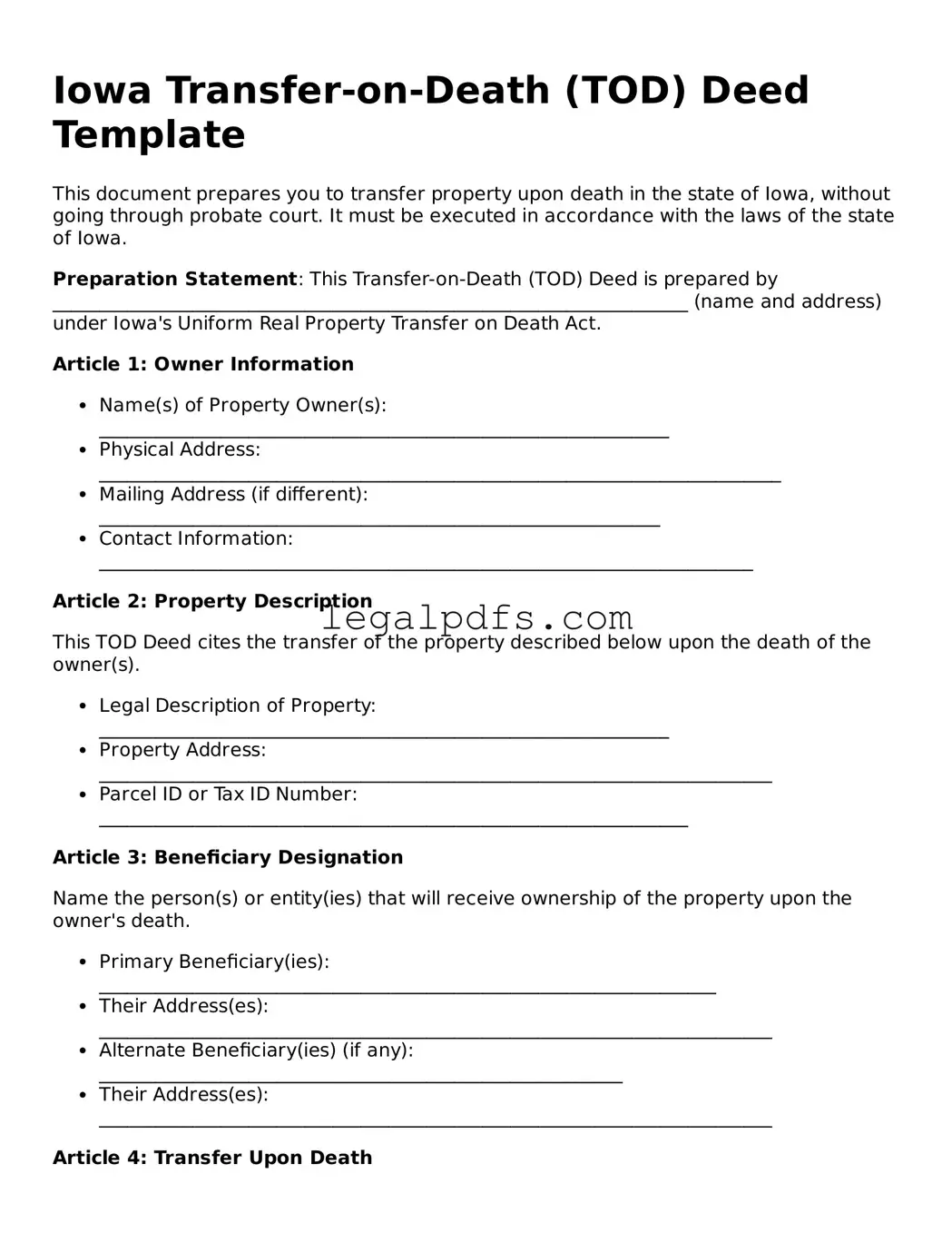Iowa Transfer-on-Death (TOD) Deed Template
This document prepares you to transfer property upon death in the state of Iowa, without going through probate court. It must be executed in accordance with the laws of the state of Iowa.
Preparation Statement: This Transfer-on-Death (TOD) Deed is prepared by ____________________________________________________________________ (name and address) under Iowa's Uniform Real Property Transfer on Death Act.
Article 1: Owner Information
- Name(s) of Property Owner(s): _____________________________________________________________
- Physical Address: _________________________________________________________________________
- Mailing Address (if different): ____________________________________________________________
- Contact Information: ______________________________________________________________________
Article 2: Property Description
This TOD Deed cites the transfer of the property described below upon the death of the owner(s).
- Legal Description of Property: _____________________________________________________________
- Property Address: ________________________________________________________________________
- Parcel ID or Tax ID Number: _______________________________________________________________
Article 3: Beneficiary Designation
Name the person(s) or entity(ies) that will receive ownership of the property upon the owner's death.
- Primary Beneficiary(ies): __________________________________________________________________
- Their Address(es): ________________________________________________________________________
- Alternate Beneficiary(ies) (if any): ________________________________________________________
- Their Address(es): ________________________________________________________________________
Article 4: Transfer Upon Death
Upon the death of the property owner(s), ownership of the described property will automatically transfer to the named beneficiary(ies), as per the conditions set out in this document and under the laws of Iowa.
Article 5: Revocation
The owner(s) retains the right to revoke this Transfer-on-Death Deed at any time.
Article 6: Signature and Witness
This document must be signed by the property owner(s) before a notary public and witnessed by two individuals who do not stand to benefit from the TOD deed.
- Property Owner(s) Signature: ____________________________________ Date: ______________________
- Witness Signature: ___________________________________________ Date: ______________________
- Witness Signature: ___________________________________________ Date: ______________________
- Notary Public: _______________________________________________ Date: ______________________
This Transfer-on-Death Deed is prepared and executed in accordance with the laws of the state of Iowa to ensure a smooth and problem-free transfer of property upon the death of the property owner.
